
Abstract: This article starts with the demand and uses questionnaire surveys and literature research methods to analyze the demand for educational robots from both user and research perspectives. From the user perspective, it summarizes the roles that educational robots need to play for three types of users: students (including elementary, middle, and university students), teachers (including preschool, elementary, and middle school teachers), and parents. From the research perspective, it analyzes the characteristics of educational robot application demands from five aspects: STEAM education, physical and mental disability therapy, second language learning, social education, and subject education. Based on this, the article proposes key points that the functional design of educational robots should focus on, aiming to promote the improvement and innovative application of educational robots, enabling them to better serve education and teaching.
Keywords: Educational Robots; Demand Analysis; User Perspective; Research Perspective; Functional Design

With the development of artificial intelligence technology, the intelligent level of educational robot services is continuously improving, and its application value in the education field is receiving increasing attention. The “Education Informatization 2.0 Action Plan” emphasizes strengthening the research and application of key technologies such as intelligent teaching assistants, educational robots, and intelligent learning companions[1]. Demand is the starting point of technology research and development. What functions educational robots need to have for their main users—students, teachers, and parents—has become an important research topic.
1 Demand Survey and Analysis Methods for Educational Robots
To obtain the demands for educational robots from different user groups, this study conducted surveys of students, parents, and teachers through online questionnaires, combined with literature research analysis, aiming to reveal the future application scenarios of educational robots from different perspectives.
1 Survey Methods
① Questionnaire survey: Students, teachers, and parents are regarded as the main users of educational robots, and questions are set from various dimensions such as life, study, and work. This survey used the Questionnaire Star platform and was disseminated through WeChat. Respondents first watched a video about the application of educational robots lasting about 3 minutes, and then answered questions corresponding to their roles. A total of 1032 valid questionnaires were collected from teachers, 1345 from parents, and 857 from students.
② Literature research: Using the Social Science Citation Index (SSCI) and Science Citation Index (SCI) citation databases from Web of Science as the search source, the keyword “Educational Robot” was used for retrieval, with the search time set from January 1, 2014, to June 30, 2019, focusing on articles in the field of educational robots—after filtering by researchers, a total of 252 articles were obtained. This study used these documents as data sources to extract different user demands for educational robots.
2 Analysis Methods
① Analysis of questionnaire survey results: First, six researchers organized the educational robot demand content from each questionnaire one by one, categorizing and coding it according to the roles that educational robots can undertake, with role names derived from the book “The Windfall of Educational Robots—Global Development Status and Trends”[2]. New categories discovered were defined after discussion among the six researchers. Subsequently, each questionnaire was coded twice by two researchers; if different codes were found, group discussions were held to determine the results. Finally, the roles that educational robots need to play for different users were statistically analyzed to assess the demand for educational robots from different user perspectives.
② Analysis of literature research results: The knowledge graph research method was mainly used to conduct thematic research and visualization analysis on the 252 articles. First, various types of keyword clustering analyses were conducted on the literature using VOSviewer 1.6, Bicomb 2013, and SPSS 24, resulting in five clusters of educational robot research; then, through cross-analysis of literature themes and applicable groups, the demand proportions for each type of user were obtained; finally, combining the roles of educational robots, the demands for educational robots under different research perspectives were analyzed.
2 Analysis of Educational Robot Demand from Different User Perspectives
The results of the questionnaire survey showed that students, teachers, and parents collectively proposed 233 demands for educational robots, which can be summarized into 13 types of educational robot roles, namely: robot life partner, robot life assistant, robot health assistant, robot learning assistant, robot learning partner, robot learning consultant, robot teaching tool (toy), robot teacher, robot teaching assistant, robot assistant, robot guardian, smart home control, and smart classroom control. The roles of educational robots serving students, teachers, and parents are shown in Tables 1 and 2.
Table 1 Educational Robot Roles Serving Students
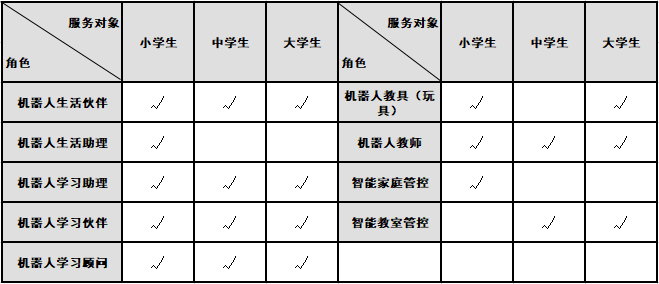
Table 2 Educational Robot Roles Serving Teachers and Parents
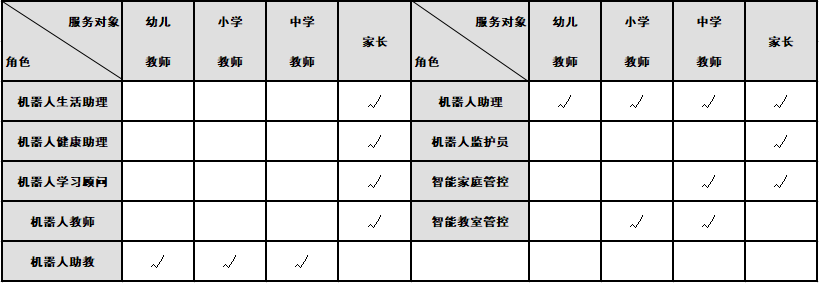
1 Analysis of Educational Robot Demand from the Student Perspective
(1) Analysis of Educational Robot Demand from the Elementary Student Perspective
From the perspective of elementary students, educational robots need to play multiple roles, such as reliable partners and assistants, teachers and parents who educate and care for them, etc. Statistics show that elementary students have 13 demands for educational robots, which can be summarized into eight roles. The demands that best reflect the characteristics of elementary students are: reminding them to do homework, tutoring homework, checking homework; helping arrange study plans; helping with dictation, practicing spoken English daily like a good friend, correcting incorrect pronunciations; teaching knowledge related to robots; reminding them of the weather, time, and tasks to be done, answering questions encountered in daily life; and playing and gaming like friends.
The demands expressed by elementary students are very clear and specific, closely related to their age and understanding of learning and life. From the perspective of applicable scenarios, most of the demands from elementary students for educational robots are suitable for home environments. That is to say, elementary students need educational robots to provide auxiliary support functions beyond teachers and parents. In addition, this also indicates that elementary students’ understanding of what services educational robots can provide is still unclear, and the level of demand is relatively low.
(2) Analysis of Educational Robot Demand from the Middle School Student Perspective
From the perspective of middle school students, educational robots also need to be versatile, playing different roles in family, classroom, and public places. Statistics show that middle school students have 12 demands for educational robots, which can be summarized into six roles. Typical demands from middle school students for educational robots include: guiding study plans; reminding them of daily tasks; supervising studies and homework; tutoring problem analysis, providing problem-solving ideas; practicing spoken English together; attending classes for sick students, recording lessons; helping find materials and provide learning resources; companionship and chatting; helping alleviate stress and emotional guidance; regulating hot water and warm air, possessing holographic projection, 3D printing, and VR functions.
Middle school students are not only concerned about the knowledge that educational robots possess and the service functions related to knowledge learning, but also the companionship function of educational robots as partners. If educational robots can provide emotional exchange functions, it will help middle school students relieve psychological pressure. Compared to elementary students, middle school students have a higher level of demand, with more rational requirements for the functions of educational robots.
(3) Analysis of Educational Robot Demand from the University Student Perspective
Statistics show that university students have 12 demands for educational robots, which can be summarized into seven roles. Typical demands from university students for educational robots include: becoming a research mentor that can be consulted anytime and anywhere; accompanying them in learning English and engaging in English conversations; recommending new learning hotspots; guiding learning related to artificial intelligence and robotics; providing online learning resources and courses, serving as classroom equipment management “Agent”; being small and portable for conversations anytime; and accompanying chatting like friends.
University students’ demand for educational robots to provide daily life support has decreased, no longer limited to home environments, but also needed when going out. University students’ demand for educational robots in learning has surpassed the scope of classroom and textbook knowledge, hoping that educational robots can possess higher intelligence and provide guidance on a broader range of topics. University students also pay attention to the portability of educational robots, wishing for them to provide convenient service functions anytime and anywhere, rather than being limited to specific locations.
2 Analysis of Educational Robot Demand from the Teacher Perspective
(1) Analysis of Educational Robot Demand from the Preschool Teacher Perspective
Statistics show that preschool teachers have only four demands for educational robots: reminding children of important daily tasks; helping teachers identify children’s emotions and conduct health checks; assisting teachers in making teaching aids and providing educational activity materials; organizing children for classes, acting as the teacher’s “capable secretary”—these four demands can be summarized into two roles: robot teaching assistant and robot assistant.
Preschool teachers are particularly concerned about the appearance and safety of educational robots, as these two aspects are extremely important for young children—robots with a playful appearance are more likely to be recognized as partners by children; educational robots with mobility capabilities should strictly control their movements to ensure safety and avoid accidentally harming children. Educational robots interacting with young children also need to possess a certain level of emotional understanding to adapt to the unstable emotional characteristics of young children.
(2) Analysis of Educational Robot Demand from the Elementary Teacher Perspective
Statistics show that elementary teachers have 13 demands for educational robots, which can be summarized into three roles. Typical demands from elementary teachers for educational robots include: assisting in lesson preparation, making teaching materials, preparing teaching materials; recording and analyzing classes; helping analyze teaching methods; using facial recognition to determine if students are focused on learning; analyzing and appreciating students’ works; recording students’ attendance and disciplinary issues; sharing teaching resources and presenting various resources; visualizing the effects of virtual digital classrooms; assisting in exam supervision and grading; communicating with students and providing psychological counseling.
For elementary teachers, educational robots must not only provide learning support services for students but also be able to recognize different students’ ages, personalities, and other characteristics, providing targeted support for their physical and mental health.
(3) Analysis of Educational Robot Demand from the Middle School Teacher Perspective
Statistics show that middle school teachers have 13 demands for educational robots, which can be summarized into four roles. Typical demands from middle school teachers for educational robots include: assisting in completing mechanical operations; assisting in controlling various devices and displaying high-quality teaching materials; assisting in explanations, operations, and demonstrations during teaching; maintaining a strong knowledge base to assist in answering students’ questions; helping grade homework and analyze students’ understanding of knowledge points; analyzing the reasons for test mistakes and providing intelligent feedback on knowledge gaps; assisting in teaching management; and providing one-on-one tutoring for struggling students.
From the perspective of middle school teachers, educational robot teachers must also follow teaching rules. Educational robots should be able to recognize students’ psychological characteristics, conduct intelligent diagnostics of students’ learning, and propose targeted learning plans. Additionally, if educational robots can provide timely feedback to teachers about students’ learning processes and understanding of knowledge points, it will greatly benefit teachers’ instruction.
3 Educational Robot Demand from the Parent Perspective
From the parent perspective, educational robots need to possess comprehensive family affairs handling capabilities, providing support for family members in learning, living, care, monitoring, assistance, and safety. Statistics show that parents have 14 demands for educational robots, which can be summarized into seven roles. Typical demands from parents for educational robots include: planning time for children, supervising their daily behavioral norms; chatting with children, listening to their worries; tutoring children’s homework and guiding their thinking; providing effective learning strategies and guiding children to learn independently; helping family members create a daily plan and reminding them of tasks; sharing household chores according to fixed procedures; managing household appliances, detecting air quality, temperature, and humidity; and collaboratively querying health information and providing medical knowledge.
Parents’ demands for educational robots to assist children in learning are relatively standard, as they only need to provide functions such as helping children complete homework, answering questions, practicing companionship, and reminders. However, the special demand from parents for educational robots is to focus on children’s moral, etiquette, habits, and personal development, guiding children towards healthy growth.
3 Analysis of Educational Robot Demand from Different Research Perspectives
1 STEAM Education Demand is Primarily from Elementary and Middle School Students
Literature research results show that there is a demand for applying educational robots in STEAM education among preschoolers, elementary school students, middle school students, university students, and adults; the proportion of demand for applying educational robots in elementary school STEAM (Science, Technology, Engineering, Arts, Mathematics) education is the highest (37.4%), followed by middle school students (31.2%), as shown in Figure 1. Among them, elementary school STEAM education primarily uses building block robots that play the role of teaching tools or toys to help elementary school students understand the components and structures of robots; while the proportion of building block robots used in middle school STEAM education sharply decreases, replaced by other types of robots such as Arduino, significantly improving the depth and breadth of robot education content.
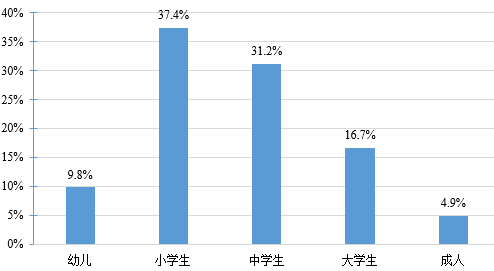
Figure 1 Proportion of Demand for Applying Educational Robots in STEAM Education
2 Demand for Physical and Mental Disability Therapy is Primarily from Preschool and Elementary School Students
Physical and mental disability therapy is the second major educational theme for educational robot applications. As shown in Figure 2, the demand for applying educational robots in the therapy of physical and mental disabilities for elementary school students is the highest (32.9%), followed by preschoolers (31.5%). Through literature research analysis, this study found that the therapy for physical and mental disabilities among elementary school and preschool students mainly targets autism, using humanoid robots to act as learning companions, engaging in social interactions with children with autism through games to promote communication with others.
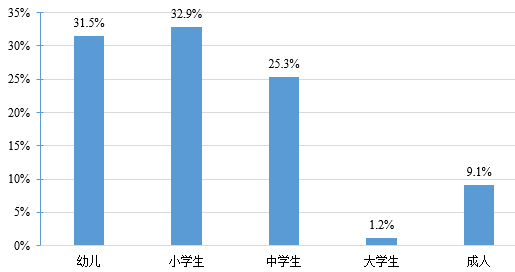
Figure 2 Proportion of Demand for Applying Educational Robots in Physical and Mental Disability Therapy
3 High Demand for Second Language Learning Among Elementary and Middle School Students
The proportion of demand for applying educational robots in second language learning is shown in Figure 3: the demand for applying educational robots in elementary school second language learning is the highest (42.8%), followed by middle school students (27.1%). The results of literature research analysis show that robots often act as learning companions, engaging in language interactive communication with young children[4], such as conversing with young children and training their listening skills, primarily using humanoid robots; robots often act as learning companions, teaching tools, or teachers, accompanying or guiding elementary and middle school students in reading or dialogue training, aiming to enhance their reading and writing skills in English as a second language, also primarily using humanoid robots; while in the language learning of university students and adults, robots mainly act as teachers, providing guidance for learning non-native languages such as English and Spanish, involving both humanoid and non-humanoid robots.
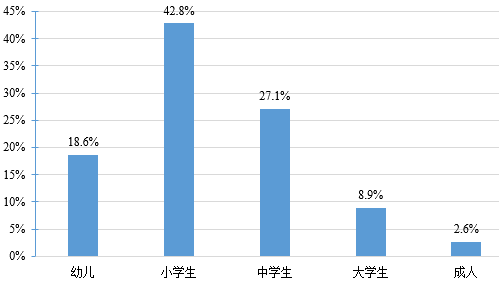
Figure 3 Proportion of Demand for Applying Educational Robots in Second Language Learning
4 High Social Education Demand Among Preschool, Elementary, Middle School Students, and Adults
The proportion of demand for applying educational robots in social education is shown in Figure 4: the demand for applying educational robots in social education among preschoolers, elementary school students, and middle school students is relatively balanced (28.3%, 26.8%, and 20.1%, respectively), while the proportion for adults is slightly lower (16.7%). Specifically, in the social education of preschoolers and elementary and middle school students, educational robots often act as companions or teaching tools to help improve their social, emotional expression, and aesthetic abilities; while in the social education of adults, educational robots mainly act as teaching tools, assisting in training job knowledge and skills for different professional groups such as doctors, nurses, athletes, and teachers, helping adults carry out specific responsibilities at work.
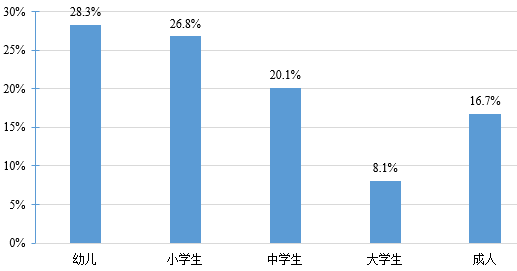
Figure 4 Proportion of Demand for Applying Educational Robots in Social Education
5 High Demand for Subject Education Among University Students
The proportion of demand for applying educational robots in subject education is shown in Figure 5: the demand for applying educational robots in university subject education is the highest (72.1%), significantly higher than the total demand of elementary, middle school students, and adults. Specifically, university students mainly use educational robots as teaching tools to assist in learning knowledge in fields such as computer science, robotics, and electrical engineering[5].
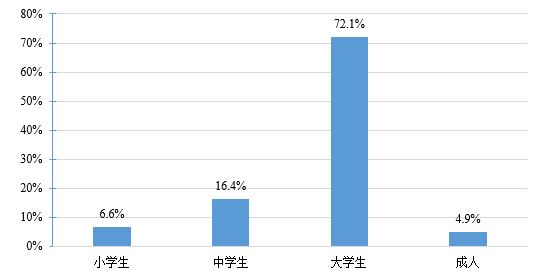
Figure 5 Proportion of Demand for Applying Educational Robots in Subject Education
4 Functional Design of Educational Robots
The diversity of user perspectives and the multidimensionality of research perspectives have led to diverse educational robot demands, reflecting the future direction of educational robot functional design. Based on the analysis results of educational robot demands from different perspectives, this study believes that the functional design of educational robots should focus on the following key points from the perspective of education and teaching:
1 Function of Assisting Second Language Learning with Natural Speech
Using educational robots to assist in learning a second language is a common demand among elementary, middle, and university students, and is one of their core demands for educational robots. Among them, student users have the greatest demand for educational robots in areas such as reading, spoken dialogue, and pronunciation practice in second language learning. Therefore, when designing the functions of educational robots, it is necessary to strengthen research and development in areas such as speech recognition, semantic understanding, and natural language dialogue, and improve their interaction level, enabling educational robots to engage in spoken dialogue with students in authentic, natural foreign language pronunciation and intonation, promptly correcting students’ incorrect pronunciations. To achieve an ideal second language learning effect, it is also necessary to establish a corpus and resource library suitable for students at different educational stages, ensuring that educational robots can interact with students using familiar vocabulary.
2 Function as a Teaching Tool for Robot Education
Robot education involves using educational robots as teaching tools to impart knowledge related to robots through specific courses, enabling students to master robot construction, structure, programming, etc., suitable for elementary, middle, and university students. As a teaching tool for robot education, educational robots need to have flexible assembly and disassembly characteristics, as well as powerful programming functions. Based on this, the design of educational robots can focus on materials, structural components, appearance, sensors, servos, etc., making it easy to build more diverse structures—this approach is particularly applicable to the design of vehicle-type robots; for humanoid robots, designing them as multiple independent modules that can be connected and disassembled is an ideal choice. In terms of programming function design, educational robots should not only focus on technical requirements such as sensor data collection and servo controllability but also consider students’ age and cognitive development characteristics, providing students with more flexible operational and user-friendly visual programming tools, guiding them to focus on problem-solving.
3 Function of Emotional Communication with Students
The results of the questionnaire survey show that students generally prefer to view humanoid robots as trustworthy friends and partners, expressing a strong desire for educational robots to become their confidants capable of emotional communication. The design of emotional communication functions for educational robots should at least focus on the following three aspects: ① having a more attractive form. Different robot forms will affect user experience and acceptance, and the robot’s form is influenced by its appearance, mechanism components, and materials. ② possessing strong situational awareness and emotional recognition capabilities. Educational robots need to recognize users’ states at all times, perceiving the relationship between users and their environment to communicate smoothly with users. ③ having strong interactive capabilities. Natural language interaction, gesture-based physical interaction, etc., are trends in the development of educational robot interaction capabilities.
4 Function Implementing Educational Services According to Teaching Rules
With the richness and iterative updates of educational robot products, people’s demands for educational robots are gradually becoming more rational. Future educational robots should not only provide question-and-answer services but should also be familiar with teaching rules, providing diverse educational services based on teaching content and student characteristics. Therefore, educational robots should be designed to implement educational services according to teaching rules and focus on developing their educational service intelligence to enhance the educational applicability of educational robots. There are mainly two ways to develop educational service intelligence: one is to stack more types of intelligence on educational robots, which will significantly increase costs; the other is to deconstruct educational services, refining the roles and functions of educational robots, developing specialized educational robots that provide specific services rather than educational robots with comprehensive service functions—given the current level of artificial intelligence development, the latter is more feasible.
5 Conclusion
This study analyzes the demand for educational robots from different users and research perspectives, indicating that the demand for educational robots is highly diverse, and their potential application value is enormous. With technological advancements, educational robots can serve as partners, assistants, consultants, teachers, and undertake more responsibilities of real people, rather than just being machines with a certain level of intelligence. Therefore, in functional design, in addition to continuing to enhance the general intelligence of robots, educational robots also need to strengthen the design of various educational functions according to user demands, enabling them to possess genuine educational service intelligence, thereby better serving education and teaching.

References
[1] Ministry of Education. Notice on Printing and Distributing the “Education Informatization 2.0 Action Plan” [OL].
<http://www.moe.gov.cn/srcsite/A16/s3342/201804/t20180425_334188.html>
[2] Liu Dejian, Huang Ronghuai, Chen Nianxing, et al. The Windfall of Educational Robots—Global Development Status and Trends [M]. Beijing: People’s Posts and Telecommunications Press, 2016: 5.
[3] Takács A, Eigner G, Kovács L, et al. Teacher’s kit: Development, usability, and communities of modular robotic kits for classroom education [J]. IEEE Robotics & Automation Magazine, 2016,(2):30-39.
[4] Lee S, Noh H, Lee J, et al. On the effectiveness of robot-assisted language learning [J]. ReCALL, 2011,(1):25-58.
[5] Browne A F, Conrad J M. A versatile approach for teaching autonomous robot control to multi-disciplinary undergraduate and graduate students [J]. IEEE Access, 2018,(6):25060-25065.
